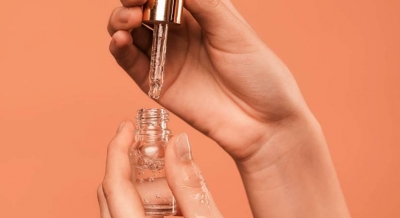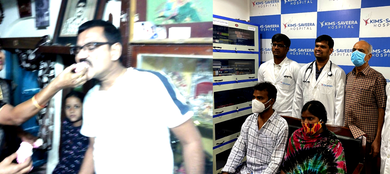
If healthy, glowing, younger-looking skin is your goal, here’s what you need to do:
Vitamin C and retinoids
Vitamin C plays an important role in protecting the skin and creating additional collagen. By adding this vitamin to your diet, you can shield the collagen you already have while boosting your body’s natural production. Slather on a vitamin C serum in the morning. You can also find vitamin C in broccoli, strawberries, papaya, leafy vegetables (spinach and kale), citrus fruits (oranges, limes, grapefruits). Retinoid/retinol are vitamin A derivatives that upregulate genes involved in collagen production. Apply a pea-size amount of retinol to your entire face every other night. Retinol boosts collagen production, promotes skin renewal, and brightens skin tone.
Peptides and chemical peels
Peptides, also called polypeptides, naturally occur in the skin, but they’re also included in many skin care products – and for good reason. Peptides are amino acids that make up certain proteins needed by the skin. More specifically, collagen is made of three polypeptide chains, so adding peptides can stimulate your skin to make collagen. More collagen can lead to firmer, younger-looking skin. Additionally, chemical peels are a wonderful way to keep your skin looking and feeling revitalised and fresh. Chemical peels use hydroxy acids (like glycolic acid) to boost skin cell turnover. When skin grows back after a chemical peel, it triggers the production of collagen and elastin. This can help make your skin smooth, supple, and strong.
Sunscreen and antioxidants
Over-exposure from the sun’s UVA rays can also hurt collagen stimulation. With frequent sunscreen application, you can protect your skin and maintain collagen production. Start by using a broad-spectrum SPF 30 or higher. Make sure to apply it more than once a day if you’re likely to sweat it off in a few hours. Your skin also needs antioxidants to relieve inflammation and neutralise damaging free radicals. Antioxidant rich skincare products can stimulate your body’s new collagen production while protecting your existing collagen. Also include foods such as apricots, asparagus, beets, broccoli, carrots, bell peppers, kale, mangos, pecans, berries, and spinach to your diet.
Supplements and a nutritious diet
Consider a diet that is mainly based on protein (lentils, beans, eggs, chicken, and fish), whole grains (brown rice, millets, quinoa, etc.), and healthy fats (olive oil, avocados, and coconut oil) along with fresh vegetables and fruits; as well as nuts and seeds. Foods that are processed, high in trans-fat, deep fried, high in sugar (fizzy drinks, biscuits, etc.) can diminish your internal glow and imbalance your hormones. Drink plenty of water to stay hydrated. Avoid smoking, cut back on alcohol, and limit caffeine intake. For supplements, collagen, zinc, coenzyme Q10 and peptides are some of the supplements that you may want to consider for skin elasticity.
Exercise and sleep well
When we exercise, we increase and improve blood circulation which delivers oxygen and nutrients to our skin. Once the oxygen and nutrients arrive, they assist skin cells in reproduction as well as feeding the fibroblast cells that produce collagen. Likewise, sleep is directly related to glowing skin and the creation of human growth hormone. It is during your sleep that your body and skin repair themselves. The production of skin proteins like collagen and elastin speed-up in your sleep. Make sure you get 7-9 hours of sleep every night.
Bio-remodelling
Providing hydration from the inside, bio-remodelling is a revolutionary treatment process that boosts the skin’s own natural ability to make collagen and elastin, two of the most important components in a healthy, youthful skin. With the highest concentration of hyaluronic acid, it stimulates skin cell receptors to improve skin quality by restoring hydration and promoting radiance. Profhilo is a new breakthrough skin treatment designed to remodel multi-layer skin tissue. It improves ageing and sagging tissue by smoothing and tightening the skin. Besides the face, it can also be injected into neck, hands and other areas with high skin laxity.






